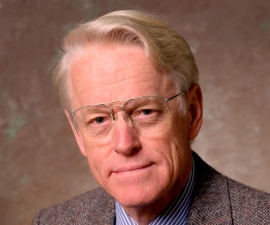

Research Expertise and Interest
physics, utilizing far infrared and near-millimeter wavelength radiation, infrared physics, experimental cosmology, MAXIMA experiment, cosmic background radiation, far infrared spectroscopy, astrophysics experiment
Research Description
The purpose of my research is to develop better tools for utilizing far infrared and millimeter wavelength radiation and to use these tools to make measurements in important areas of physics. Many of the now standard techniques for laboratory far infrared spectroscopy were first developed in my program. Our critical inventions and developments have led to improvements in direct detector sensitivity by a factor 10exp7 and heterodyne receivers by a factor 10exp2. These technical improvements have created opportunities for research in many fields. We have focused on the far infrared spectroscopy of solids and on experimental cosmology, especially the spectrum and anisotropy of the cosmic microwave background radiation.
The MAXIMA experiment to measure the anisotropy of the temperature of the cosmic microwave background occupied my group for a number of years. These measurements yielded experimental estimates of the power spectrum of the microwave background over a wide range of angular scales. When compared with theoretical calculations of the power spectrum based on various cosmological models, these measurements provided detailed tests of cosmological models and precise measurements of important cosmological parameters. The MAXIMA experiment involved a 1.3 meter balloon telescope, and 16 bolometric detectors cooled to 0.08 K by an adiabatic demagnetization refrigerator.
A recurrent theme of our research is the development of improved bolometric detectors of far infrared and millimeter wavelength radiation. In collaboration with Professor Adrian Lee of the Department of physics, we are using the techniques of thin film deposition and microfabrication to develop large format arrays of superconducting bolometers with transition edge sensors and multiplexed SQUID readouts. Current projects include the MAXIPOL balloon experiment and the Polar bear Ground based experiment to measure the anisotropy of the polarization of the cosmic microwave background. Also, the APEX experiment uses the scattering of the microwave background (Sunyaev-Zeldovich effect) to search for large numbers of clusters of galaxies to learn about the early development of structure in the universe. Many technologies are involved in these projects, including optics, cryogenics, analog and digital electronics, mechanical design, control engineering and system engineering.